The attractive lacy foliage of trailing indigo bush (
Dalea greggii) may appear rather delicate, but this drought-tolerant ground cover thrives in hot, reflected heat. The gray-green leaves and low mounding growth habit add a softening element to the arid landscape, and its flowers add subtle beauty in spring into summer.
With many urban areas experiencing warming temperatures, or the urban heat island effect, ground covers such as trailing indigo bush are helpful ways to lower hot summer temperatures in the landscape.
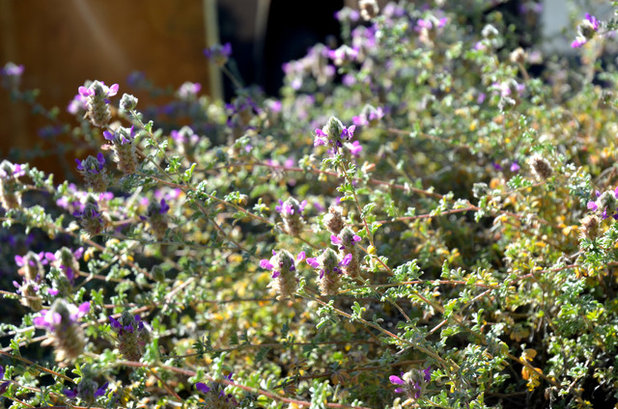
Noelle Johnson Landscape Consulting
Botanical name: Dalea greggiiCommon names: Trailing indigo bush, Gregg’s prairie clover, Gregg dalea
Origin: Native to Texas and Mexico
Where it will grow: Hardy to 10 degrees Fahrenheit, or minus 18 degrees Celsius (USDA Zone 8; find your zone)
Water requirement: Low to moderate; water deeply every two weeks in summer, every three weeks in spring and fall, and monthly in winter
Light requirement: Full sun; reflected sun
Mature size: 1 foot to 2 feet tall and 2 to 6 feet wide
Benefits and tolerances: Drought-tolerant once established; deer-resistant; flowers attract bees
Seasonal interest: Flowers appear in spring and bloom into summer; blooming may also occur in early fall
When to plant: Plant from transplants in late winter, spring or fall.
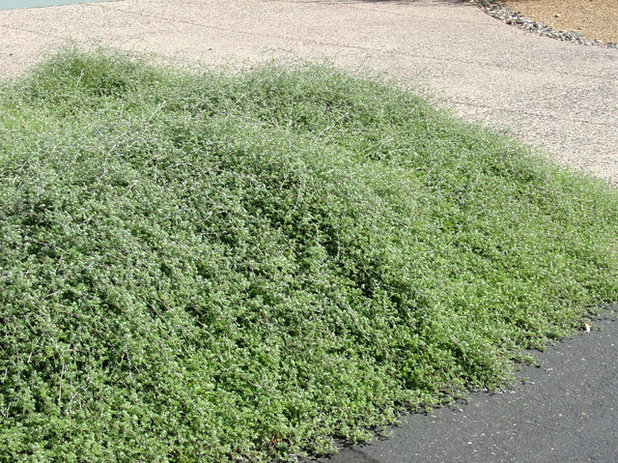
Noelle Johnson Landscape Consulting
Distinguishing traits. The foliage of trailing indigo bush stands out in the landscape throughout the year, with its lacy texture made up of tiny gray-green leaflets.
Evergreen in zones 9 and above, this ground cover gradually spreads out and creates an attractive gray-green carpet. The ability of its stems to root where they touch the bare ground makes this an excellent plant for erosion control.
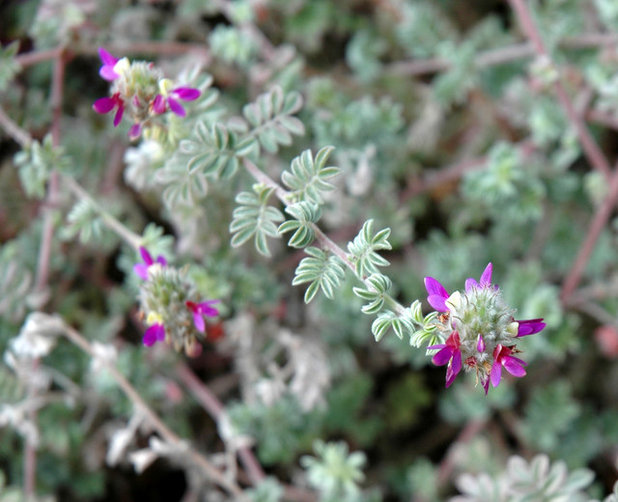
Noelle Johnson Landscape Consulting
Fuzzy light purple flowers begin to appear in spring and can last into summer. Occasional blooms may also appear in fall, much to the delight of bees, who race to pollinate them. Appreciate these flowers up close, as they aren’t very noticeable from a distance.
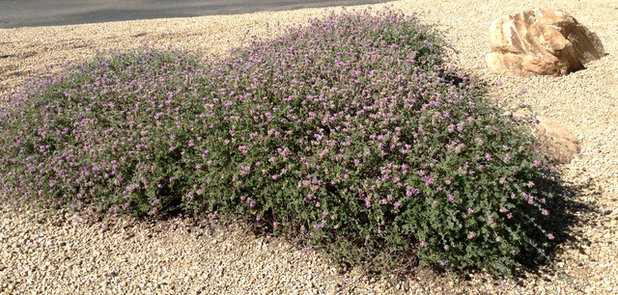
Noelle Johnson Landscape Consulting
How to use it. In addition to using it for erosion control, trailing indigo bush is a great choice in open spaces where reflected heat is intense, particularly near driveways and sidewalks.
Its soft gray-green color looks great alongside succulents with darker green foliage, such as cow horn agave (
Agave bovicornuta), Texas desert spoon (
Dasylirion texanum) and Mexican grass tree (
Dasylirion quadrangulatum).
For a landscape display of soft pastel blooms, plant trailing indigo bush in front of taller plants, such as Parry’s penstemon (
Penstemon parryi) or pink fairy duster (
Calliandra eriophylla).
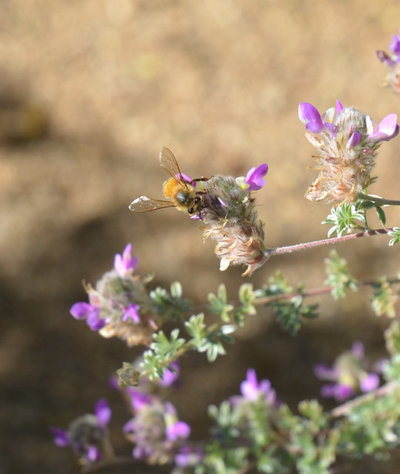
Noelle Johnson Landscape Consulting
Planting notes. Plant in full sun in well-drained soil, as its roots will rot in wet soil. No soil amendments or fertilizer is needed.
Pruning should be done in early spring, concentrating on removing any dead growth and preserving its gentle mounding growth habit.





